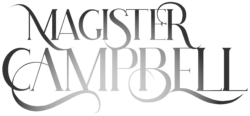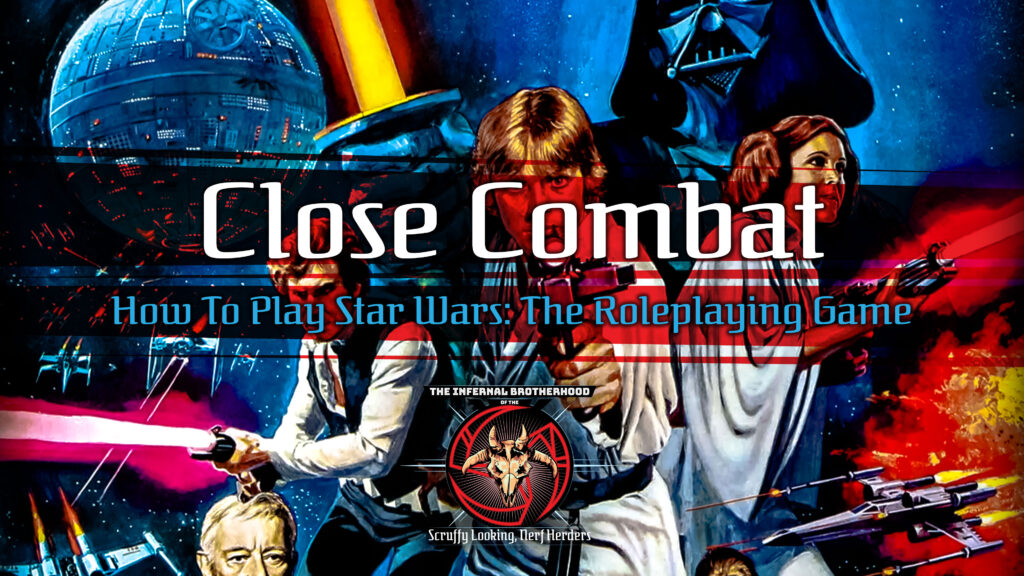Let’s learn the basics of close combat in West End Games’ Star Wars: The Roleplaying Game 30th Anniversary Edition. You can learn more about Star Wars: The Roleplaying Game here: https://en.wikipedia.org/wiki/Star_Wars:_The_Roleplaying_Game
You can pick up the original sourcebooks as PDF’s here: https://www.starwarstimeline.net/Westendgames.htm
Time Stamps:
- 0:00 Intro
- 0:41 Combat Recap
- 1:24 Close Combat
- 3:04 Lightsabers
- 4:17 Grenades and Thermal Detonators
- 6:32 Outro
About Star Wars: The Roleplaying Game 30th Anniversary Edition
Few books or games have had as enduring an impact upon the Star Wars galaxy and its fans as Star Wars™: The Roleplaying Game. Originally published by West End Games in 1987, it arrived at a time when the future of the Star Wars galaxy was uncertain, and it captivated a whole generation of gamers with rules and guidelines that made it possible to design and enjoy adventures truly worthy of the Star Wars universe and its ongoing space opera.
Now Fantasy Flight Games is proud to offer faithful recreations of this influential rulebook and The Star Wars™ Sourcebook. Our Star Wars™: The Roleplaying Game 30th Anniversary Edition is a limited edition set of both books, printed with higher quality than the originals and packaged in a stylized slipcase.
These books were sent to Timothy Zahn as references when he started to develop Grand Admiral Thrawn and his Thrawn trilogy. They introduced materials that were later adopted into Star Wars canon, such as the names of alien races like the Twi’lek, Rodians, and Quarren. They even inspired members of the Lucasfilm Story Group as they worked on their writers’ bible.
Now, Fantasy Flight Games is proud to return Star Wars: The Roleplaying to print as a collectible set of two high-quality, hardbound books presented in a stylized slipcase. You’ll find all the original game materials—just as playable as ever—and they’re presented with the same graphic design and fake, in-universe Star Wars advertisements for the Imperial Navy, the R2 astromech Droid, and more.
Even the books’ use of black-and-white, blue ink, and full color sections have been recreated, along with its use of still photos and concept art, some of which have been updated for this new 30th Anniversary Edition. Finally, the books come with a foreword by Pablo Hidalgo, one of the creative executives on the Lucasfilm Story Group.
Transcript
Intro
Welcome to The Infernal Brotherhood of the Scruffy Looking, Nerf Herders! In this episode of How to Play West End Games’ Star Wars: The Roleplaying Game 30th Anniversary Edition, we are discussing Close Combat.
Discussion
We have already gone over the basic game mechanics and the combat round, but while close combat follows the basic combat procedures, there are a few differences that bear further discussion. Not to mention dealing with weapons like Lightsabers and Grenades and Thermal Detonators. But let’s begin with a quick recap.
Combat Recap
The combat round is broken down into segments, with everyone determining their actions, declaring their actions, taking their first action at the same time, and the highest successful opposed rol,l damages and interrupts the lower opposed roll. If anyone declares a second action, all actions are reduced by 1D and they then take their second action. And so on. For most combat situations you will be using ranged weapons like blasters for example, where the difficulty number you need to roll over is equal to the range your target is at in relation to you. For point blank range you roll over a five, short range, over a ten, medium range over a fifteen, and long range over a twenty. But what if you are brawling or in melee combat?
Close Combat
You may find yourself in close combat where you need to attack an enemy with your hands or with a melee weapon. The game mechanics are the same as with ranged combat, only rather than using the range for your difficulty number, you use the difficulty number of the weapon. So for example, hand to hand attacks’ difficulty number is five, a spear’s difficulty number is ten, a vibroblade’s difficulty number is fifteen and a lightsaber’s difficulty number is twenty. With hand to hand attacks you would roll your Brawling skill, and with melee weapon attacks you would roll your Melee skill. You may only make a hand to hand attack if you are within two meters of each other.
As a reaction you can naturally dodge, but you would use your Brawling Parry skill if you have no weapon, and you would use your melee parry skill if you do have a weapon. However, Brawling Parry only works against brawling attacks, not melee attacks, but Melee Parry works against both brawling and melee attacks. To parry as a reaction, you would roll your appropriate parry skill, and add that to your attacker’s difficulty number. If the attacker’s roll is equal to or greater than the modified difficulty number, they hit their target.
Damage is based on the method of attack as well. Each brawling and melee weapon has a damage code. Brawling attacks use your Strength attribute for damage. Melee weapons use the Strength attribute and the weapons damage code. You roll both and add them together. The defender would then roll their strength and you would compare the two totals to determine damage received, like in ranged combat.
Lightsabers
Lightsabers are used slightly differently. First, anyone can use a lightsaber, but if you are force sensitive, you can use it in special ways. However finding a lightsaber is incredibly difficult as they are rare. A lightsaber is used in the same way as other melee weapons with the following caveats: Attacks are made with the lightsaber skill, not the melee skill. You never add strength to the lightsaber’s damage code. However, if you have the Control skill, you can add that when determining damage.
The only thing that can parry a lightsaber is another lightsaber, period. These plasma swords cut through limbs and other materials after all. You can use a lightsaber to parry any other melee weapon, you would use the melee parry skill, or Sense skill if you are force sensitive. The downside is that if the attacker’s roll is greater than the difficulty number, but less than the modified difficulty number due to the parry, the weapon is cut in half and destroyed. This is the same for brawling attacks, but you are wounded rather than lose the limb.
I will be covering the force in a future episode, so look for that video for further uses of a lightsaber.
Grenades and Thermal Detonators
Finally, I would like to discuss how to use Grenades and Thermal Detonators in combat. These weapons are in a category of their own, as they are neither melee or fired weapons. If you fail to hit your target with a grenade, it simply means it scatters, but it still does area damage. Unlike other weapon types, you don’t have to see your target to hit them. They can also be dodged, but the total is applied to the grenade’s difficulty, not the throwers.
Throwing a grenade is done in three steps. First, determine if the thrower succeeds in hitting the target or if it scatters. Second, determine if the grenade damages each character in its blast radius. And third, determine how much damage they receive. Throwing uses the same range difficulty mechanic as ranged firing. If you fail to roll equal to or higher than the difficulty number, the grenade scatters. You would then refer to the scatter diagram, and see where it ends up in relation to the thrower and the target. Roll 3D. That total is the number of meters the grenade scatters. When you hit your target, there are two range sections. The first is in relation to your target for the difficulty number, the second is to determine others affected by the blast. Anyone within ten meters of a grenade and twenty meters of a thermal detonator will be hit.
You would then roll for the grenade. The grenade’s difficulty number is based on range. Characters may dodge, which means falling prone to avoid the blast. You would use normal dodge rules, which would increase the difficulty number of the grenade. Roll 4D for the grenade. If it’s equal to or greater than the difficulty number, it has hit the character. If it’s lower, it misses them. Roll separately for each character within the blast radius.
Damage is based on the range the character is from the blast. Depending on the characters range from the blast you would roll that number of dice. Have the character roll their strength attribute and compare the two totals to determine damage. While it is a bit more complicated, I believe it makes sense due to the mass destructive nature of the blast radius.
Outro
Thank you all for tuning in. We invite you to subscribe to this channel and click the bell to get notified about our next video. You can now join the Infernal Brotherhood through YouTube Memberships, and pick up some of our custom designed Star Wars apparel by following the links in the description below .
Until the Infernal Brotherhood convenes again my fellow scruffy looking, nerf herders “May the Force be with you.”

